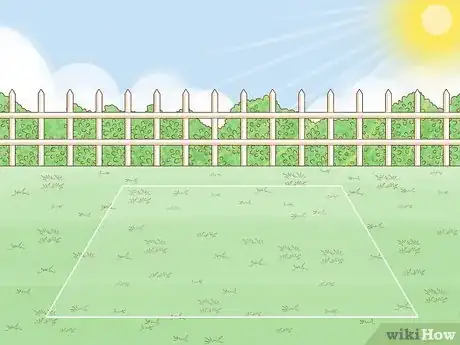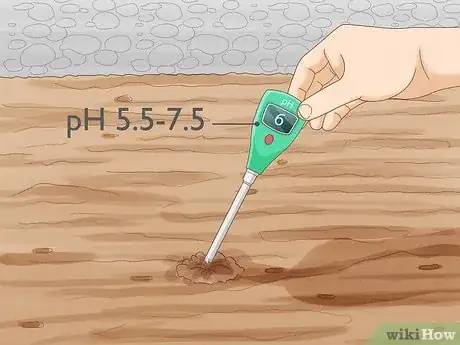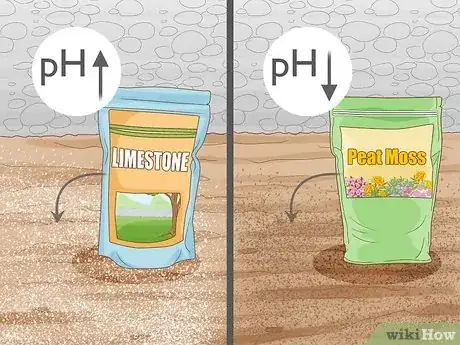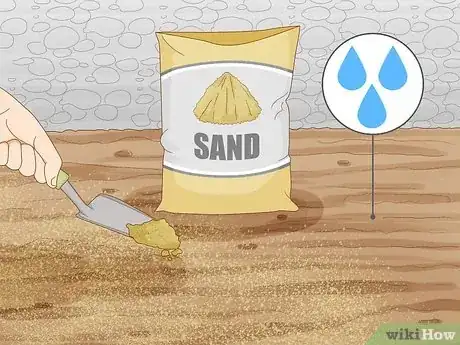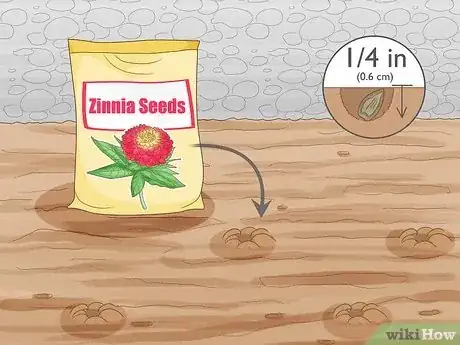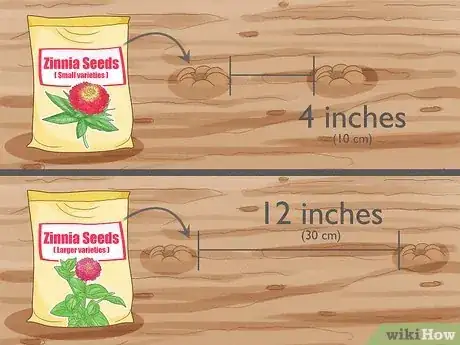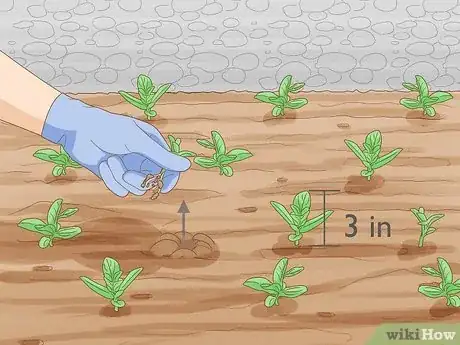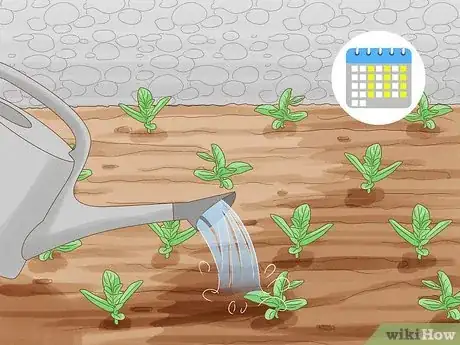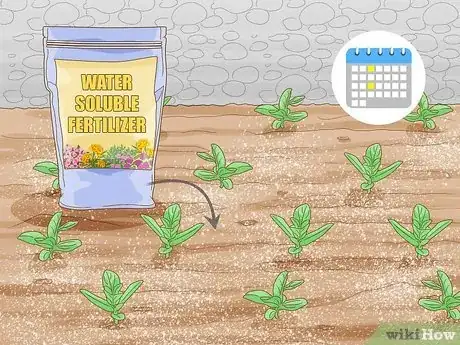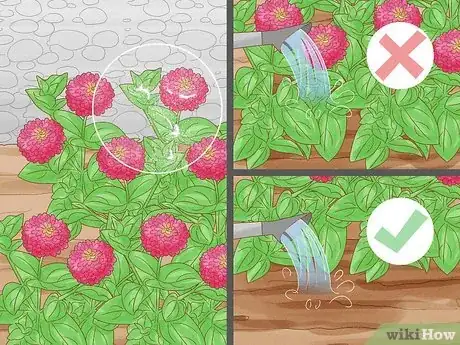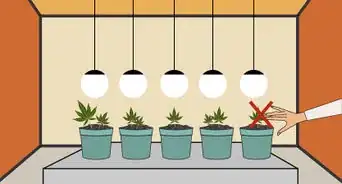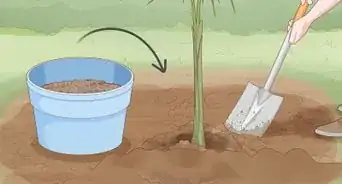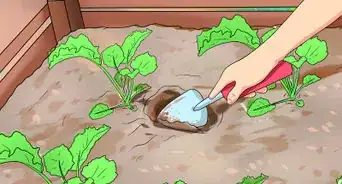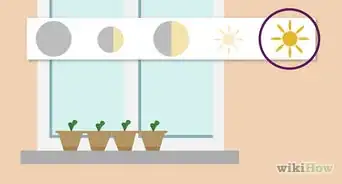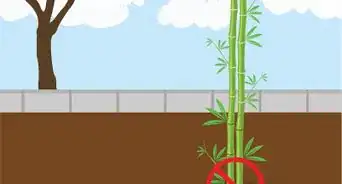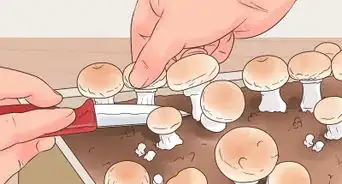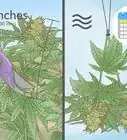This article was co-authored by Lauren Kurtz. Lauren Kurtz is a Naturalist and Horticultural Specialist. Lauren has worked for Aurora, Colorado managing the Water-Wise Garden at Aurora Municipal Center for the Water Conservation Department. She earned a BA in Environmental and Sustainability Studies from Western Michigan University in 2014.
This article has been viewed 33,394 times.
Zinnias are colorful flowers that bloom in the summer months. If you're interested in gardening as a hobby, zinnias are a fun addition to any garden. You can grow zinnias in your own backyard after the last frost date. Zinnias thrive in a sunny location, so choose an area without a lot of shade. Zinnias do best in dryer soil and benefit from occasional watering and trimming. With a little time and effort, you will have a beautiful garden of zinnias to enjoy over the summer.
Steps
Establishing the Basics
-
1Check your local frost dates. You can look local frost dates up online. Frost dates are the dates where frost can be expected overnight or in the morning. The Farmer's Almanac online can help you find your frost date by entering your zip code.[1] It's important to plant zinnias after the last frost date in the spring. Zinnia seeds will not survive if they're exposed to frost.[2]
- It's a good idea to wait a few days or a few weeks after the last predicted frost date. Weather is unpredictable and there's always a chance the forecast could be wrong.
-
2Find a sunny location. Zinnias require a lot of sun to thrive. When planting zinnias, choose an area where they get full exposure to sun. Avoid areas with any shade that could block out the warmth from the sun.[3]Advertisement
-
3Test your soil. A simple testing kit, which you can buy online or at a local greenhouse, will allow you to test your soil's pH level. For zinnias, the soil's pH should be between 5.5 and 7.5[4] If your soil's pH is out of range, adjust the soil as necessary.
- Tests vary in terms of use. Usually, you insert the test in the soil for a set period of time, sort of like using a thermometer, and then check the test to see the pH.
-
4Adjust your soil as necessary. If your pH is too high or too low, you can take measures to adjust soil pH. Adding organic materials to your soil, which you can purchase online or at a greenhouse, can alter your soil's pH.[5]
- Limestone is your best option to raise pH levels. Limestone should be added to the top seven inches of your soil.
- To lower pH levels, opt for acidic materials such as pine needles and peat moss. If you need to lower your soil's pH fast, opt for sulfur.
- If you don't want to alter your soil's pH, plant your zinnias in a pot or raised gardening bed with potting soil that has the right pH level.
Planting Your Seeds
-
1Add some sand if the ground is very moist. Zinnias actually thrive with less water. In the event your soil is too moist or prone to drainage problems, pour a small amount of sand into the ground prior to planting to get the soil relatively firm and water-free.
- For example, if you planned to plant and there was an unexpected rainfall, some sand can be used to improve conditions.
- However, in the event of a very heavy rainfall, you may want to wait a few days to plant. The soil will be very wet and adding sand may not be enough to dry it out.
-
2Plant zinnia seeds a quarter inch (.6 centimeter) deep. Use your fingers to make small holes in the ground. The holes should be about a quarter of an inch (.6 centimeter) deep for the zinnias to grow safely.[6]
-
3Give them adequate space to grow. Proper spacing is important as overcrowded zinnias may not grow. Small varieties of zinnias should be placed 4 inches (10 cm) apart. Larger varieties should be placed 12 inches (30 cm) apart.
- It's a good idea to bring a measuring tape to ensure proper spacing rather than estimating on your own.
Caring for Your Zinnias
-
1Thin your zinnias when they reach three inches. Zinnias do not require a lot of trimming early on. However, when they reach three inches (about 8 centimeters), their leaves may be growing to the point they're touching and overlapping. At this point, use garden shears to trim any leaves and thin the plants so they're about six to 18 inches (about 15 to 46 centimeters) apart.[7]
-
2Water your zinnias lightly. Before they begin to grow, water your zinnias daily. After they've become established, however, zinnias do not need a lot of watering. Cut back to watering them 3 days a week.[8]
-
3Fertilize your zinnias every other week. Purchase a water soluble fertilizer online or from a local greenhouse. Work the fertilizer into the ground surrounding the zinnias every other week to promote growth.[9]
- Review your fertilizer's package for precise instructions on use. The package should indicate how much fertilizer should be used depending on the size of your garden.
-
4Minimize the risk of mildew. Zinnias are not susceptible to a lot of pests, but may become infected with mildew. Take measures to protect your zinnias from mildew. To prevent mildew, space your zinnias apart when you plant them, and avoid overwatering them. When you do water zinnias, water them at soil level. Make sure to trim your zinnias regularly to prevent overcrowding.
Community Q&A
-
QuestionCan I move the plants after they start to grow?
 NinoxTop AnswererYes, you can move them after mid-May. Don't forget to water them generously when you do it.
NinoxTop AnswererYes, you can move them after mid-May. Don't forget to water them generously when you do it. -
QuestionI've been told by a well-meaning neighbor to snip off the first bud on my zinnias so they will branch out. Is this true?
 NinoxTop AnswererYes, new branches will appears to replace the bud. If you want to stimulate flowers, remove the wilted ones.
NinoxTop AnswererYes, new branches will appears to replace the bud. If you want to stimulate flowers, remove the wilted ones.
References
- ↑ http://www.almanac.com/gardening/frostdates/MI/Hancock
- ↑ http://www.almanac.com/plant/zinnias
- ↑ http://www.almanac.com/plant/zinnias
- ↑ http://www.almanac.com/plant/zinnias
- ↑ http://vric.ucdavis.edu/pdf/Soil/ChangingpHinSoil.pdf
- ↑ http://www.almanac.com/plant/zinnias
- ↑ https://www.rodalesorganiclife.com/garden/zinnia/slide/1
- ↑ http://www.denverpost.com/2008/05/23/zinnias-can-take-the-heat-and-drought/
- ↑ http://www.denverpost.com/2008/05/23/zinnias-can-take-the-heat-and-drought/

